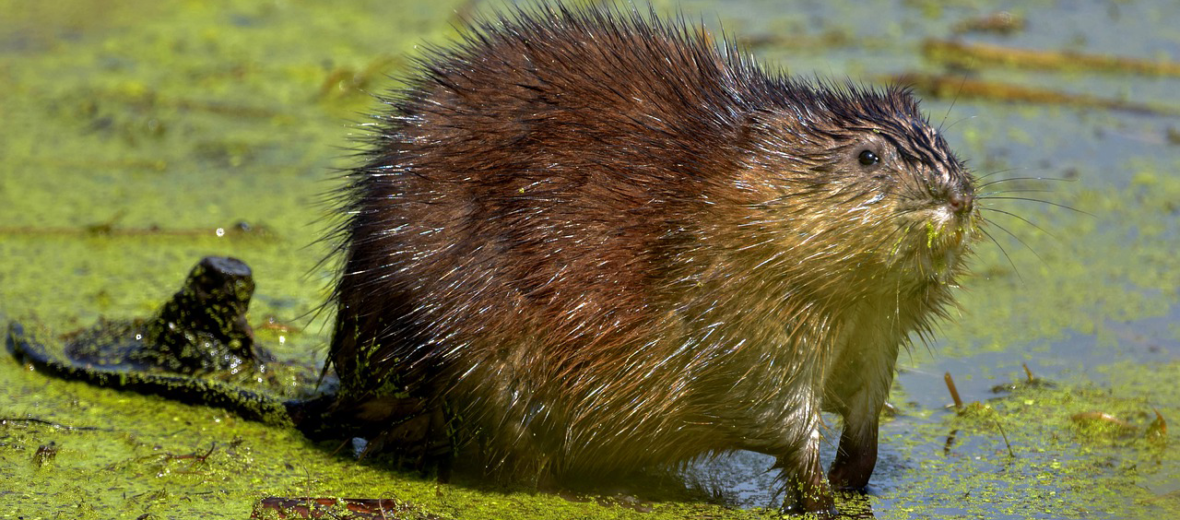
The muskrat, aka musk-beaver, is a semi-aquatic rodent native to North America & Mexico and introduced to Asia, Europe, and South America. They prefer wetlands, marshes, ponds, lakes, and river habitats. This species of rodent is considered an invasive, agricultural pest in all the countries in which it has been introduced; as they destroy crops. Even though they are trapped & hunted (for their pelts) and poisoned to control their population, these rodents are still listed as Least Concern by the IUCN, due to their stable, global numbers.
First the Stats…
Scientific name: Ondatra zibethicus
Weight: Up to 4.4 lbs.
Length: Up to 28 inches, plus up to a 12 inch tail
Lifespan: Up to 4 years
Now on to the Facts!
1.) Their pelts are of increasing economic value around the world.
2.) In areas with high densities of muskrats, there has been extensive destruction of local habitat, which includes damage to river banks (due to burrowing), and the massive reduction of aquatic vegetation (due to over consumption for food and building materials).
3.) They have 2 layers of fur: an inner layer and an outer, waterproof layer.
4.) These critters get their name from the smelly, oily substance they secrete from their anal glands. This is used to mark their territory.
5.) Muskrats feed primarily on cattail, but will also happily take other types of vegetation (like crops) and even prey on snails, insects, freshwater mussels, frogs, and fish.
But wait, there’s more on the muskrat!
6.) They are both crepuscular (active at dawn and dusk) and nocturnal (active at night).
7.) Their long tails are covered with scales instead of hair. They use their tails to aid in propulsion in the water.
Did you know…?
While they can only swim at up to 3 mph, they can stay submerged in water for up to 20 minutes at a time!
8.) Minks, alligators, coyotes, foxes, lynx, hawks, owls, eagles, and more all prey on muskrats.
9.) Muskrats usually patrol an area of 200 square yards.
10.) Breeding season is between March – July.
But wait, there’s still more on the muskrat!
11.) Males are polygamous (males mate with more than 1 female).
Did you know…?
During the spring, males typically fight over territory and potential mates. Numerous muskrats are injured or even killed in these vicious fights.
12.) Females undergo up to a 30 day gestation (pregnancy) that yields up to 7 young.
13.) Babies are born altricial (blind and helpless).
14.) After up to 6 weeks, the young leave the den.
Now a Short Muskrat Video!
Be sure to share & comment below! Also, check out the Critter Science YouTube channel. Videos added frequently!
Want to suggest a critter for me to write about? Let me know here.



